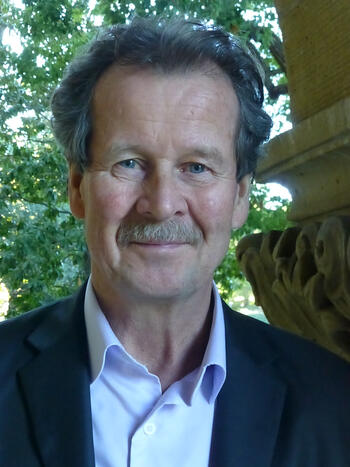Is the sky falling or is everything going swimmingly well? Probably neither - Observations and recommendations about uncertainties from a risk analyst's perspective
Abstract: When evaluating or reporting a risk, there is a tendency to ignore or underestimate uncertainties and to take catastrophist or exceedingly optimistic positions. Media amplification can spread fears that exceed the actual risks and group interests can obscure real ones. Further, in retrospect, a common excuse for inaction is to call a bad surprise a “black swan” that could not have been anticipated when there was ample information to the contrary. From a risk analyst perspective, I will discuss the logic of quantifying uncertainty rather than using classic adjectives and adverbs (“likely”, “unlikely”, “pretty certain”, etc.). I will present some basic, elementary properties and observations, for example, more information does not mean less uncertainty, taking the most likely hypothesis and presenting it as certain is logically wrong, so is letting the last screaming headline obscure the value of prior information. For each, I will present and discuss some examples.
About the Speaker: Dr. M. Elisabeth Paté-Cornell is the Burt and Deedee McMurtry Professor of Engineering, Professor of Management Science and Engineering at Stanford University and Chair (Emerita) of Management Science and Engineering. She is a Senior Fellow (by courtesy) of the Stanford Freeman Spogli Institute for International Studies and joined CISAC as an affiliated faculty member in September 2011.
She is a world leader in engineering risk analysis and management and more generally, the use of Bayesian probability to process incomplete information. Her research and that of her Engineering Risk Research Group at Stanford have focused on the inclusion of technical and management factors in probabilistic risk analysis models with applications to the NASA shuttle tiles, offshore oil platforms and medical systems. Since 2001, she has combined risk analysis and game analysis to assess intelligence information and risks of terrorist attacks.
She is a member of the National Academy of Engineering, the French Academie des Technologies and of several boards including Aerospace, Draper Laboratory and InQtel. Dr. Paté-Cornell was a member of the President's Foreign Intelligence Advisory Board from December 2001 to 2008. She holds and Engineering degree (Applied Math/CS) from the Institut Polytechnique de Grenoble (France), an MS in Operations Research and a PhD in Engineering-Economic Systems, both from Stanford University.
Encina Hall (2nd Floor)
Elisabeth Paté-Cornell
475 Via Ortega Room 336
Huang Engineering Building
Stanford, CA 94305
Dr. M. Elisabeth Paté-Cornell was born in Dakar, Senegal. Her academic degrees are in mathematics and physics (BS, Marseilles, France, 1968), applied mathematics and computer science (MS and Engineer Degree, Institut Polytechnique de Grenoble, France, 1970; 1971), operations research (MS, Stanford, 1972), and engineering-economic systems (Stanford, PhD, 1978). She was an Assistant Professor of Civil Engineering at MIT (1978 to 1981). In 1981, she joined the Stanford Department of Industrial Engineering and Engineering Management, where she became Professor (1991), then Chair (1997). In 1999, she was named the Burt and Deedee McMurtry Professor in the Stanford School of Engineering. She oversaw from 1999, the merger of two Stanford departments to form a new department of Management Science and Engineering, which she chaired from January 2000 to June 2011. She is a Senior Fellow (by courtesy) of the Stanford Freeman Spogli Institute for International Studies. She joined CISAC as an affiliated faculty member in September 2011.
She was elected to the National Academy of Engineering in 1995, to its Council (2001-2007), and to the French Académie des Technologies (2003). She was a member of the President’s Intelligence Advisory Board (2001-2004; 2006-2008). Her current memberships include the Boards of Trustees of the Aerospace Corp. (2004-), of InQtel (2006-) and of Draper Corporation (2009-). She is a member of the Board of Advisors of the Naval Postgraduate School, which she chaired from 2004 to 2006.
She is a world leader in engineering risk analysis and management and more generally, the use of Bayesian probability to process incomplete information. Her research and that of her Engineering Risk Research Group at Stanford have focused on the inclusion of technical and management factors in probabilistic risk analysis models with applications to the NASA shuttle tiles, offshore oil platforms and medical systems. Since 2001, she has combined risk analysis and game analysis to assess intelligence information and risks of terrorist attacks.
She is past president (1995)/fellow of the Society for Risk Analysis, and fellow of the Institute for Operations Research and Management Science. She has been a consultant to many industrial firms and government organizations. She has authored or co-authored more than a hundred papers in refereed journals and conference proceedings. She has received several best-paper awards from professional organizations and peer-reviewed journals.






